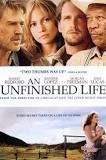Think a Positive Story–Live One Too

If you see your life as a positive story, can you also live one too? Well, the process certainly has benefits, but it also has elements fighting against it. Years ago when I was struggling with some health issues, a close mentor-friend told me to say aloud to myself: every day and every way I ‘m getting better and better and better. I did. And I did. Now, with everything we are facing in the current 24-hour-news cycle, it might be a good idea to steal away some positive thinking time and turn off the noise.
The theory behind the internal monologue is that your subconscious mind, a powerful force, hears things you say like: I’m never going to get that job; I’m a failure; with everything that is happening, life just isn’t going to get better; and these words actually affect your actions so that the negative thing happens—especially if the negative is often repeated or has nothing positive to offset it.
It’s your powerful subconscious that is programming your future either into good luck and success or into the hospital—or possibly the grave. Tell yourself at 50 they you just want ten more years and it’s quite possible you’ll have to struggle with a major illness when you hit your 60th birthday. It’s important to cultivate positive feelings about your life and your life choices.
Skeptical? For one thing thinking positively leads to positive action, action that encourages health, advancement, and success. Examples: caring for the body by following preventative health measures; caring for the mind by exposing one’s self to new ideas, theories, and keeping up with what’s happening on the planet all the while avoiding repetitive negative news that increases your heart rate and makes you yell at your family.
Clinging to the negative (he hates me, he’ll never promote me no matter what I do, we are doomed, things will never get better) can preclude personal growth. Opening to the positive can be transformative.
It’s not an easy thing to do. Sometimes today is all that counts–as some reach for the cigarette, the street drug, drive while texting, fail to practice safe sex, ignore new information available to them and balk at taking a class or working under a new supervisor to advance in a career. People want to give in and say, “Forget it. No mater what I do, things are going down hill.” Instead of fighting back, believing it’s a momentary slump, things will improve and the positive will occur.
Seventy-three-year-old Byron Katie, who has been called a Spiritual Innovator for the 21st Century, in her book I Need Your Love—Is That True? teaches that we can create our own reality by believing our own thoughts. And she is talking about toxic thoughts, thoughts that make us suffer. Who wouldn’t want to change that.
She says: “Thoughts are like children. They’re gonna scream till we pay attention. When we do, and when we put these beliefs to certain questions, thoughts we’ve believed for 40, 50, 60 years—the worst stressful thoughts—get popped. It takes a lot of courage. But isn’t it time to get real? Haven’t we conned ourselves long enough?” I love that–the thoughts get popped, we see that they are wrong, that isn’t who we are.
The above process is what happens in Katie’s seminars that she calls The Work. Who should attend The Work? Katie says: “It’s for everyone who wants to end their own suffering and whose mind is open to questioning what they believe to be true.”
Here are four questions you would have to ask yourself at a Byron Katie seminar.
Question 1: Is it true?
Katie says this question can change your life if you can be still and ask yourself if the thought you wrote down is really true.
Question 2: Can you absolutely know it’s true?
Another chance to open your mind and go deeper into the unknown, finding true answers that might be hidden by what we think we know.
Question 3: How does your body react—what happens—when you believe that thought?
This helps you notice internal cause and effect. When you believe the thought, there is a disturbance. It’s stress that can range from mild discomfort to fear or panic. How does what you’ve written about, the thought you believe, make you feel about a person or event? How do you treat yourself or the person you have written about because of this thought?
Question 4: Who would you be without the thought?
Imagine yourself in the presence of the person or event without believing the thought. Would your life be different if you could remove the stressful thought? Katie finally asks: which do you prefer—life with or without the thought?
Katie instructs her attendees to Turn the thought around: When you do this, you are able to experience the opposite of what you believe. Once you have found one or more turnarounds to your original statement, you are invited to find at least three specific, genuine examples of how each turnaround is true in your life.
Katie writes: “The Work reveals that what you think shouldn’t have happened, should have happened. It should have happened because it did, and no thinking in the world can change it. This doesn’t mean that you condone it or approve of it. It just means that you can see things without resistance and without the confusion of your inner struggle.”
Katie and my mentor-friend are similar in their approach. Having one life to live should encourage us to find truth and to find a way to live with truth, as some of it—ie chronic illness, the death of a child, the loss of a job—makes living extremely difficult. But we cannot blame it away, deny it away, hate it away. And we should not go through our days telling ourselves that because of the event, the illness etc we are doomed.
My mentor-friend showed me that for physical challenges it helps to talk to your body with love. Example: gently massage your forehead or neck when you have a headache while saying relax, you’re okay, take it easy, instead of throwing yourself into an activity where you attempt to ignore the pounding and just be angry at your body.
And for interpersonal challenges, it’s about approaching the stressful situation staying as calm as possible until you have all the facts. In a huge argument with a teenager you might be able to acknowledge that one choice he made during the event was a good one, while pointedly explaining why the other choices showed poor judgment. When it’s over, you’ve kept the door open and helped him walk away with some pride intact.
Finally, for mental challenges, it might be necessary to seek the help of a counselor, someone who can work with you on an impartial basis and help you see where you are, how you can stop “stinking thinking” and get past your hurt. At the end of each day, meditation with a thank you repeated over and over to Spirit can help you get up and cope again the following day.
Byron Katie says: “On our deathbeds, we’re still saying that he or she ruined my life. People say life is a dream. Well, let’s question the nightmare and have a happy dream. Retiring from stressful thoughts could be the most important retirement there is.” So think a positive story and live one too.
(For more information about Byron Katie and The Work click on the links above.)
Thanks always to Barbara Tennant
To watch a film where what someone believes affects his entire life, watch:
An Unfinished Life with Robert Redford, Jennifer Lopez and Morgan Freeman.
Below, Bryon Katie Above photo courtesy of Google Images
(Visited 18 times, 3 visits today)





